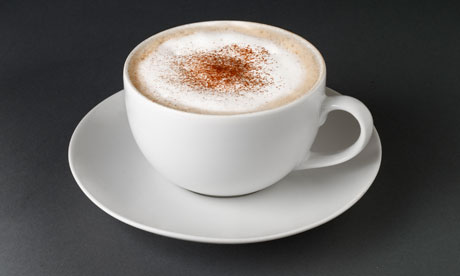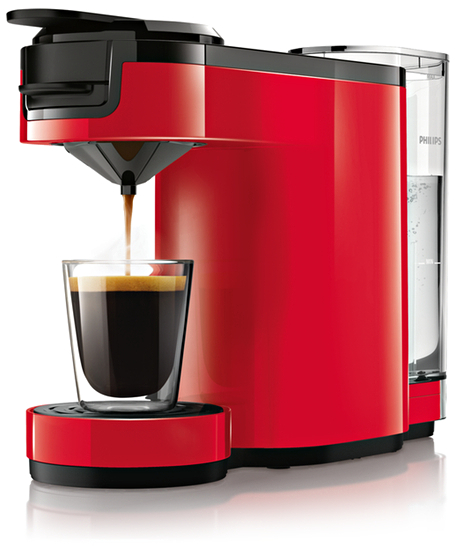Original Post:
http://www.theguardian.com/sustainable-business/design-challenge-philips-senseo-coffee-recycled-plastics
For related resources, Design for Disassembly, Eco-Design, Environment and AD Technology guidelines related to this can be downloaded for free at:
Philips' SENSEO Up coffee maker small in size but big in recycled plastics
With high recycled plastic content and other sustainability credentials, the new coffee machine is part of a large-scale initiative to incorporate recycled plastics into product design

Brewing one cup at a time in single our double households could prevent waste. Photograph: Getty
In 2008, Philips Consumer Lifestyle started working on a series of projects aimed at closing the materials loop. An important focus in these projects was to incorporate the use of recycled plastics in product design. Besides the obvious environmental benefits, recycled plastics involve lower production costs than virgin plastics. Our initial approach was to use recycled plastic in existing products and parts. This had its limitations, however, as recycled plastics have slightly different properties to the virgin plastics for which the products and parts were originally designed.
So in designing SENSEO Up – our first one-cup coffee machine aimed at single or double households – we decided to change this approach and challenge our designers to specify recycled plastics right from the start of the design process.
The SENSEO Up designers had to contend with a couple of challenges. The first was a question of aesthetics. Recycled plastics are only available in dark colours, but not a real deep black. You can also see spots in the plastic and sometimes flow lines where the material was injected into the mould. We overcame this problem by using a different architecture built around an internal frame that is not visible to the end user. This frame is made of 40% reinforced polypropylene, a plastic used in many household appliances.
The second design challenge was to introduce recycled plastics in the baseplate of the SENSEO Up. First, we textured the part to give the recycled plastic a high-quality look and feel. Then we used one matte black colour for the complete range instead of many colour variations. And thirdly, we made the baseplate less visible by focusing attention on the coloured housing above it. This approach allowed us to introduce a 90% recycled Acrylonitrile Butadiene Styrene (ABS) plastic from post consumer electronic waste into the baseplate.
 SENSEO Up coffee maker Photograph: Philips
SENSEO Up coffee maker Photograph: Philips
Internal frame of the product (not visible in this picture) is made of 40% reinforced polypropylene, a plastic used in many household appliances. The baseplate of the coffee machine is made of 90% ABS plastic coming from post-consumer electronic waste.
Although technical restraints mean we cannot yet use recycled plastics in coloured parts or in parts that come into contact with food, the design of SENSEO Up shows that recycled plastics can be successfully introduced into other applications. By designing the new SENSEO Up from scratch for the use of recycled plastics, we succeeded in launching it with a total of 13% recycled plastics.
The SENSEO Up has other important environmental benefits besides the use of recycled plastics. As it is a one-cup coffee machine, it is smaller than a two-cup model and three times smaller than the previous SENSEO model, SENSEO Twist, which was launched in 2012. Not only does the compact size mean that it will fit in even the smallest kitchens, but it also needs less packaging and will cause fewer emissions during transport. The SENSEO Up also has reduced energy consumption. The new interface allows users to start the machine, warm up, brew coffee and shut down at just one touch of a button. This means that SENSEO Up goes to off mode immediately after the coffee is brewed, resulting in 10% energy saving compared to other SENSEO machines shutting off automatically.
Designing the SENSEO Up for recycled plastics has not only created a great new product, but has also allowed us to take a tangible next step towards a circular economy. By using recycled plastics in our products, we hope to create a market for high-quality recycled plastics that allows recyclers to invest in better technologies, resulting in improved recycling of all our products. The SENSEO Up is part of a bigger initiative on recycled plastics, in which we aim to use 3500 tons of recycled plastics in 2015. We hope that many companies will join us on our journey towards recycled plastics, so that together we can have a lasting impact on the way products are designed and recycled in a circular economy.
Content on this page is produced and controlled by Philips, supporter of the circular economy hub
For related resources, Design for Disassembly, Eco-Design, Environment and AD Technology guidelines related to this can be downloaded for free at:
In 2008, Philips Consumer Lifestyle started working on a series of projects aimed at closing the materials loop. An important focus in these ... senseoup.blogspot.de
ReplyDelete